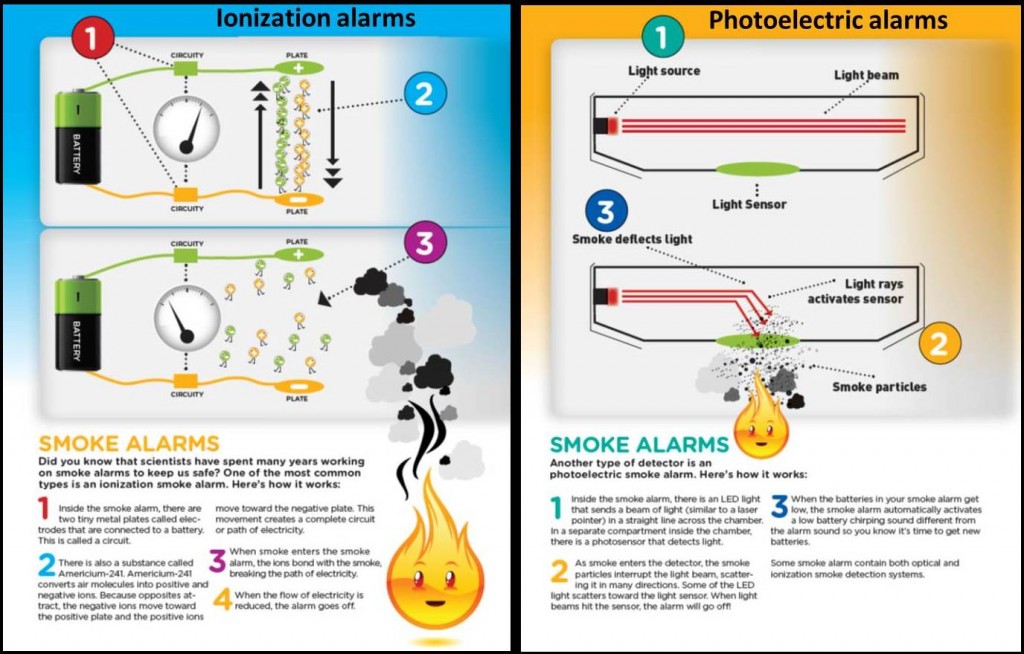 Home smoke alarms probably get our collective attention twice a year – when it’s time to change the clocks, we’re urged to change the batteries in them.
Home smoke alarms probably get our collective attention twice a year – when it’s time to change the clocks, we’re urged to change the batteries in them.
As you know, BUY YOUR SIDE Home Inspections believes that regular maintenance of homes is important – whether you’re buying, selling or staying put. So, we thought we’d address smoke alarm maintenance and whether or not a smoke alarm will save you in the event of fire.
REPLACE SMOKE ALARMS REGULARLY
According to the National Fire Protection Association (NFPA ) and the US Fire Administration, smoke alarms should be replaced every eight to ten years. Although some newer alarms already have production dates stamped inside of the alarm, both agencies recommend writing your date of purchase with a marker on the inside of your alarm so you will know when to replace it.
If you can’t find a date on the back, assume it’s over ten years old and replace it.
NOTE: Some homes have a dual carbon monoxide/smoke detector. Carbon monoxide (CO) alarms are good for only about six years, so your best bet is to avoid the smoke alarm/CO alarm combo units. Buy individual alarms and follow the manufacturer’s instructions for timely replacement of each type.
INSTALL THE RIGHT TECHNOLOGY
There are many different brands of smoke alarms available on the market but they fall under two basic types: ionization and photoelectric.
Ionization alarms sound more quickly when a flaming, fast moving fire occurs. This type of smoke alarm has a small amount of radioactive material between two electrically charged plates, which ionizes the air and causes current to flow between the plates. When smoke enters the chamber, it disrupts the flow of ions, thus reducing the flow of current and activating the alarm.
Photoelectric alarms are quicker at sensing smoky, smoldering fires. These alarms aim a light source into a sensing chamber at an angle away from the sensor. Smoke enters the chamber, reflecting light onto the light sensor; triggering the alarm.
Because these two types of smoke alarms are better at detecting distinctly different yet potentially fatal fires – and because it’s impossible to predict what type of fire might start in a home – the two fire safety organizations recommend the installation of both ionization and photoelectric smoke alarms. There are dual smoke alarms that combine ionization and photoelectric into single units.
There are also alarms made specifically to meet the needs of people with hearing disabilities. These alarms may use strobe lights that flash and/or vibrate to assist in alerting those who are unable to hear standard smoke alarms when they sound.
LOCATE AND INSTALL SMOKE ALARMS PROPERLY
At a minimum, smoke alarms should be installed inside of each bedroom, and in at least one common area on every level including the garage, basement and attic.
Always follow the manufacturer’s installation instructions so they operate effectively. The best placement for a smoke alarm is usually on the ceiling, in the middle of the room. If you’re going to install the smoke alarm on a wall, or on the ceiling near a wall, don’t place it too close to the corner. Most manufacturers recommend locating smoke alarms at least 4″ away from corners. When installing smoke alarms on a sloped or peaked ceiling, they should be within 6’ horizontal fee of the peak and well clear of the apex.
MOUNT WIRELESS SMOKE ALARMS FOR OLDER HOMES
Many homes built within the last twenty years have interconnected, hardwired smoke alarms with battery backups. These hardwired systems may be either independent of or connected to security systems.
Usually, older homes just have only independent, battery operated smoke alarms. This set-up begs this question: “if a smoke alarm sounds in the garage on one side of the house, will we hear it upstairs on the other?” Wireless smoke alarms communicate with each other just like interconnected hardwired smoke alarms; if one goes off, they all go off.
NOTE: To test if your existing smoke alarms are interconnected, hold down the test button and listen. If they’re online together, they will all sound at the same time or within a very brief delay between them.
Smoke alarms must be within their useful life, utilize technology that will activate in a variety of fires, be properly installed, and be adequately positioned can make all the difference of whether or not they will be effective when you most need them to be.

Follow Us!